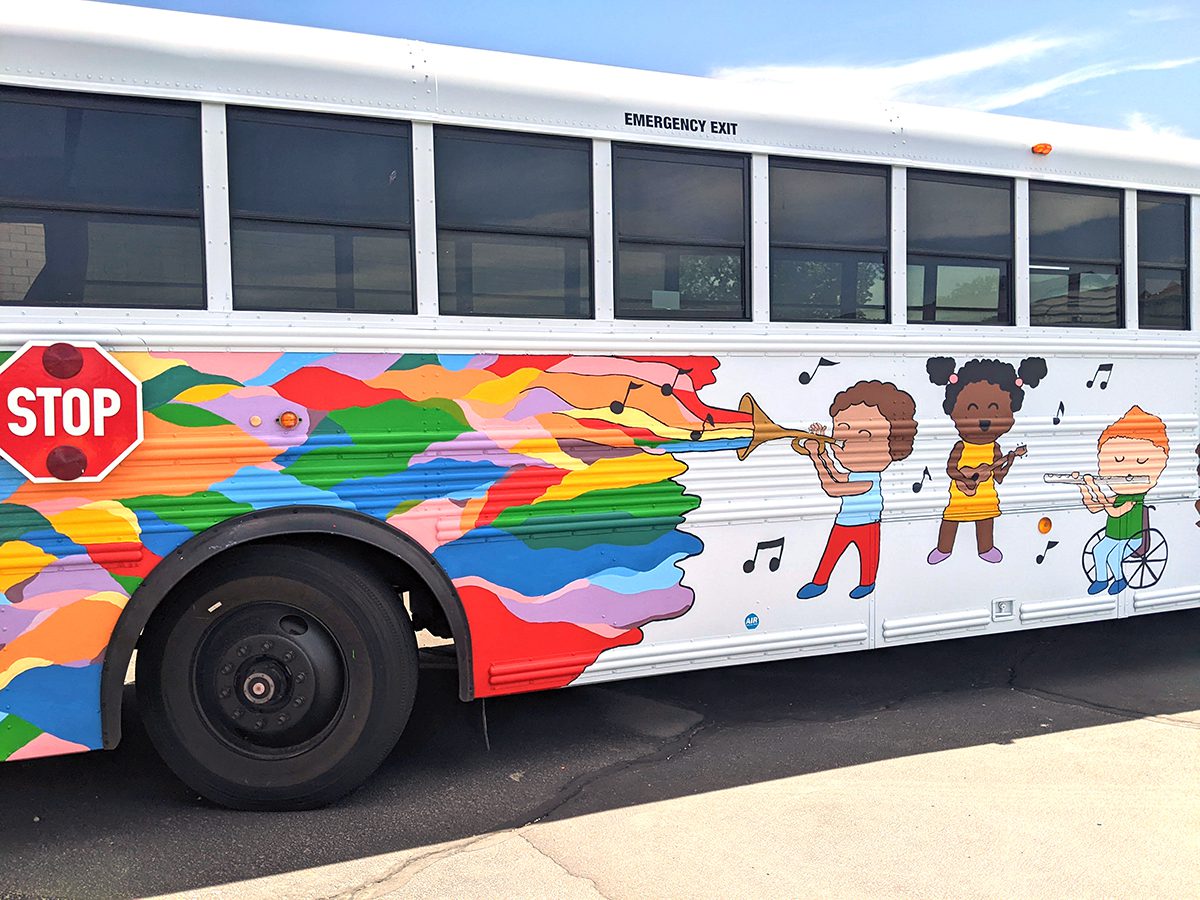Completing a large-scale mural with elementary students is possible! Not only is it possible, but murals are an excellent way to teach about collaboration, teamwork, proportion, and scale. Large murals can brighten your school building, boost morale and student ownership, and give student art a huge wow factor!
There are many alternative avenues to do a mural if you don’t have a large wall available at your school. Use rolls of bulletin board paper or a canvas drop cloth for a portable mural. Hang it anywhere in the school, and roll or fold the mural for easy storage. Display it again when you are in a pinch, and the school halls need some color!
During a mural project, your students will learn about the 4 C’s:
- Collaboration
Students gain a sense of accomplishment when they work together on a mural project to create a final product. - Creativity
Brainstorming and composing a mural helps students develop their creativity. - Critical Thinking
Students use critical thinking to analyze imagery and symbolism and problem-solve any issues that may pop up. - Communication
Students communicate their ideas by offering their input for the mural design.
For more about collaboration, watch the Collaboration in the Art Room Pack in PRO Learning.
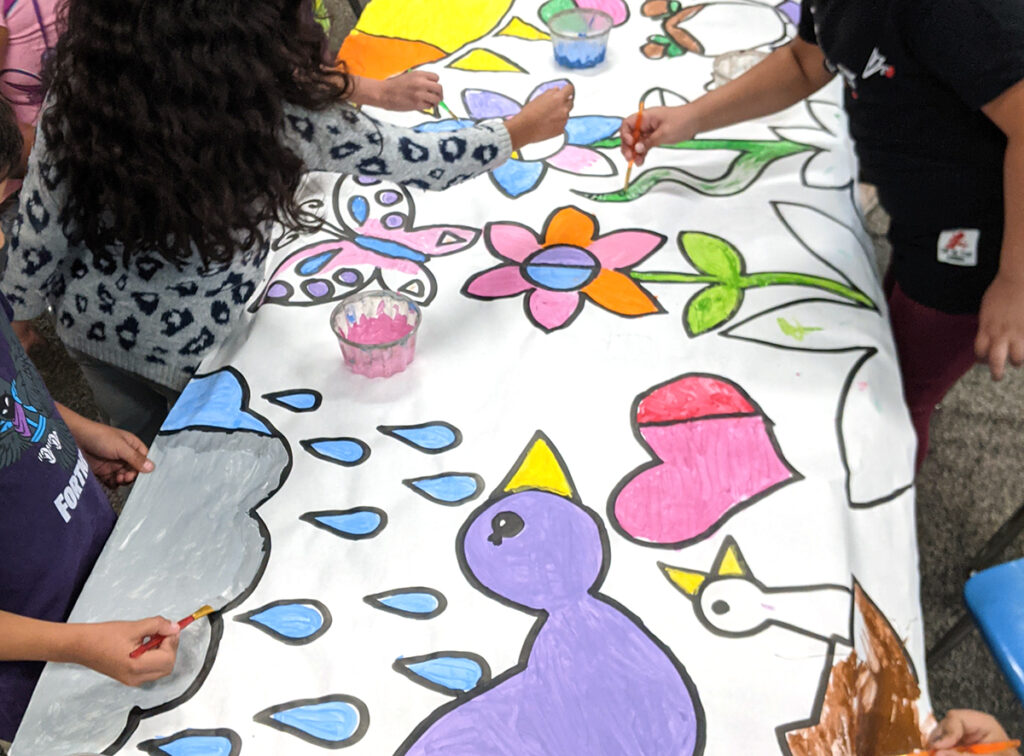
For in-depth professional development on mural painting, take a look at the Mural Painting Pack in PRO Learning. Art educator Matt Christenson walks you through the process from ideation and large-scale image transfer to color theory and paint application. Learn how to initiate student leadership skills and promote interdisciplinary critical thinking through short tutorial videos and teacher-facing resources. Read how to get your district or school to cover PRO by checking out this article and filling out this quick contact form.
Let’s walk through five essential tips for your elementary-level mural to be as successful as possible!
1. Get inspired.
Select a theme or topic to guide the mural’s design. Your theme can capture your school’s mission or goal. Other example themes for elementary students can be community, music, integration, or friendship. Look at a ton of murals throughout history and in your community to gain ideas. Children’s picture books are also a fantastic way to get inspiration, and you can read ones in class that correspond with the mural’s theme. The children’s book, Maybe Something Beautiful by Rafael López, is a great story highlighting murals and community.
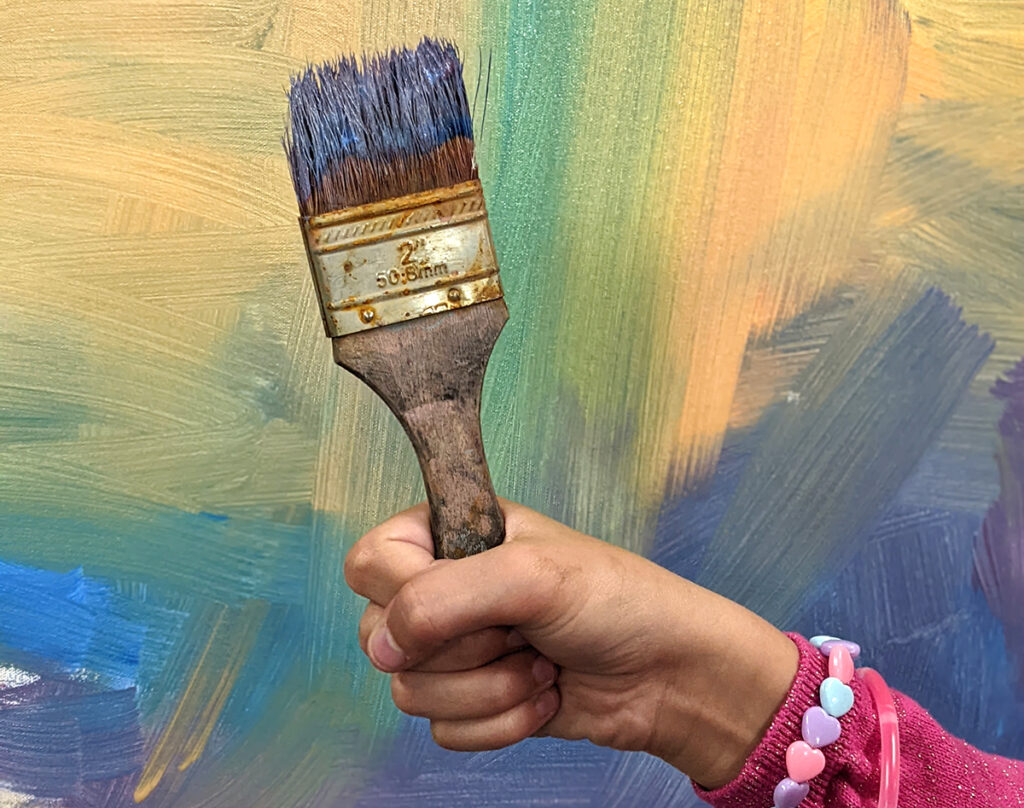
2. Find support.
Student and teacher support is a huge factor in a successful mural project. Gather teachers, specialists, and faculty to help with the mural. This can be a fun family artmaking evening or day as well. Build a team around you. You may be surprised at who is excited and enthusiastic to help! Painting a mural is a huge undertaking, so delegate responsibilities and let the community participate.
3. Encourage student input.
Bring your elementary students into the project by encouraging their input. Since younger students aren’t able to design a complex composition yet, have them submit drawings of their ideas. Incorporate as many of these ideas and little images in the final design. This is a guaranteed way to get students excited about the mural and increase ownership in your art room and school.
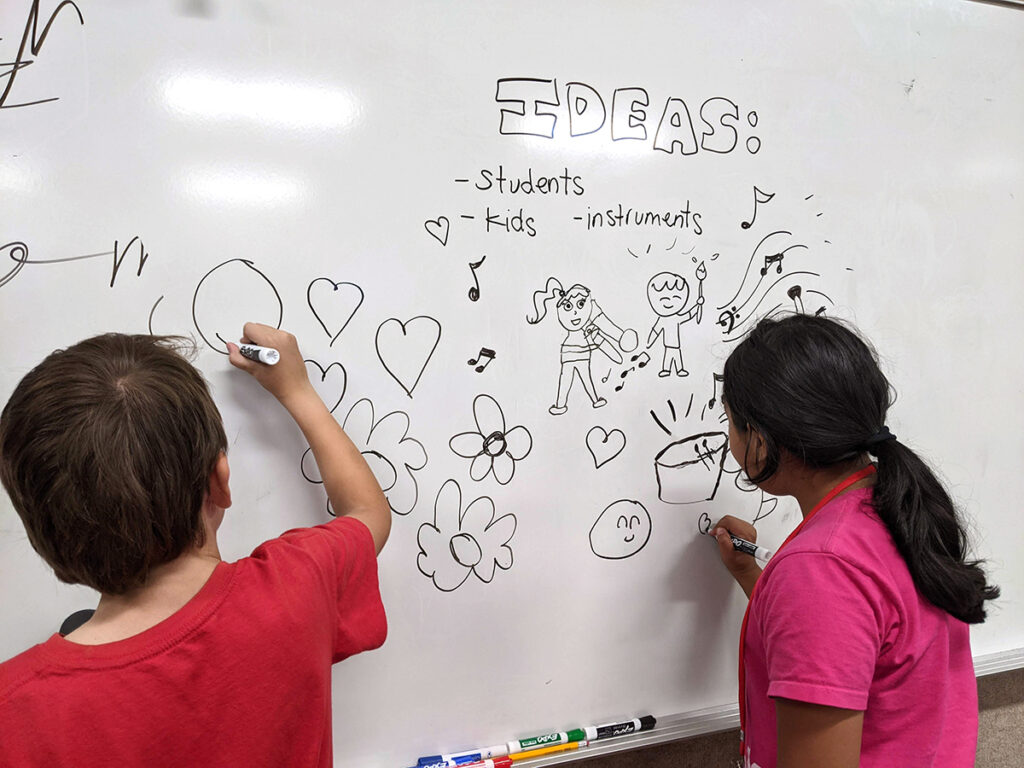
For instance, my art program painted a mural on a drum bus. One of the requirements was to have images of children playing music and doing art. One student had the brilliant idea to make the drumsticks into paintbrushes. Our team took this suggestion and implemented it into the final design. Your students are intuitive and may have some fun additions you would never have thought of!
4. Break it down.
Break down your mural into smaller sections to make it easier for elementary-age students to fill in. Outline the edges of images with a pencil or marker to clearly show what shapes need to be painted. Ensure the mural will have strong craftsmanship with clean edges by having your students outline each shape with a bold line. Younger artists can fill shapes with solid colors, and older classes can outline. Delegate a few responsible older students to be responsible for setting up and cleaning up.
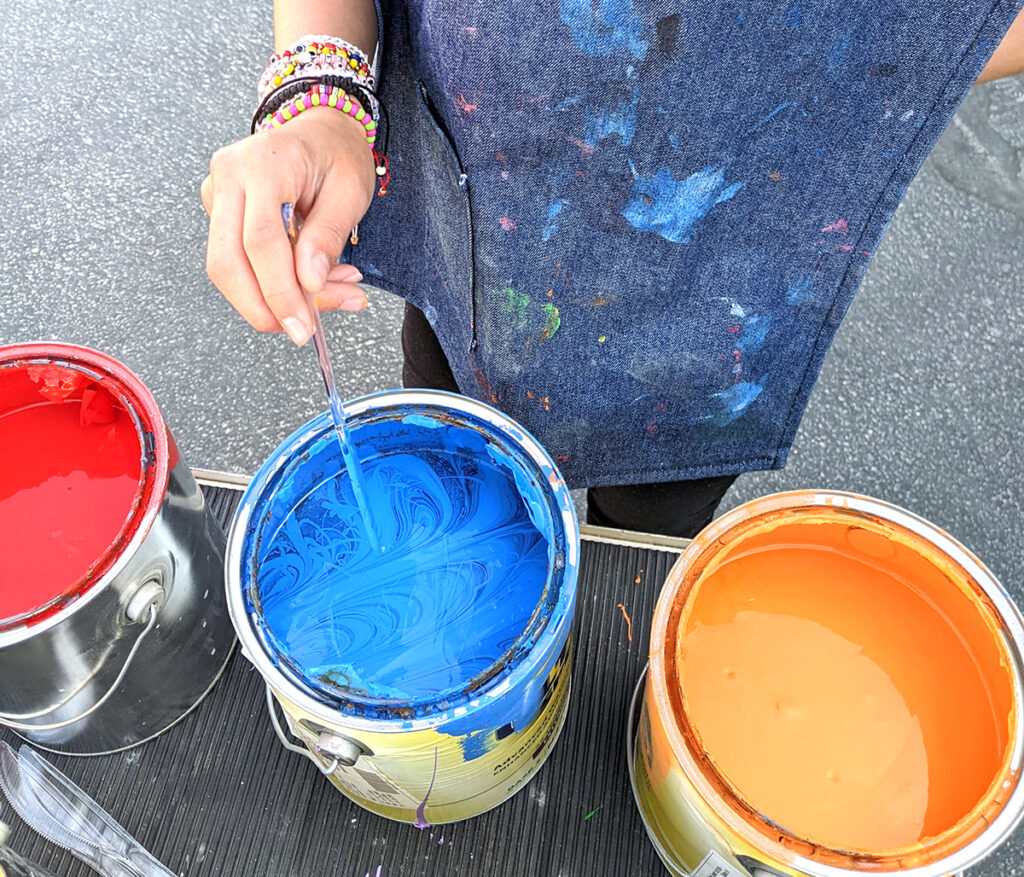
5. Remember the big picture.
Throughout the process of creating the mural, remember to step back and look at the whole design from a distance. Encourage your elementary students to view the mural from lots of angles. This will enable you and your students to see any mistakes or odd spacing. It can be easy to get caught up in the small details and forget to view them in the context of the bigger picture.
Take lots of photos and record a time-lapse of the painting process! This will help you and your students remember the project as a whole. Having lots of media resources can also come in handy to promote your art program, whether on your own social media platform or your district or school’s platforms or newsletters.
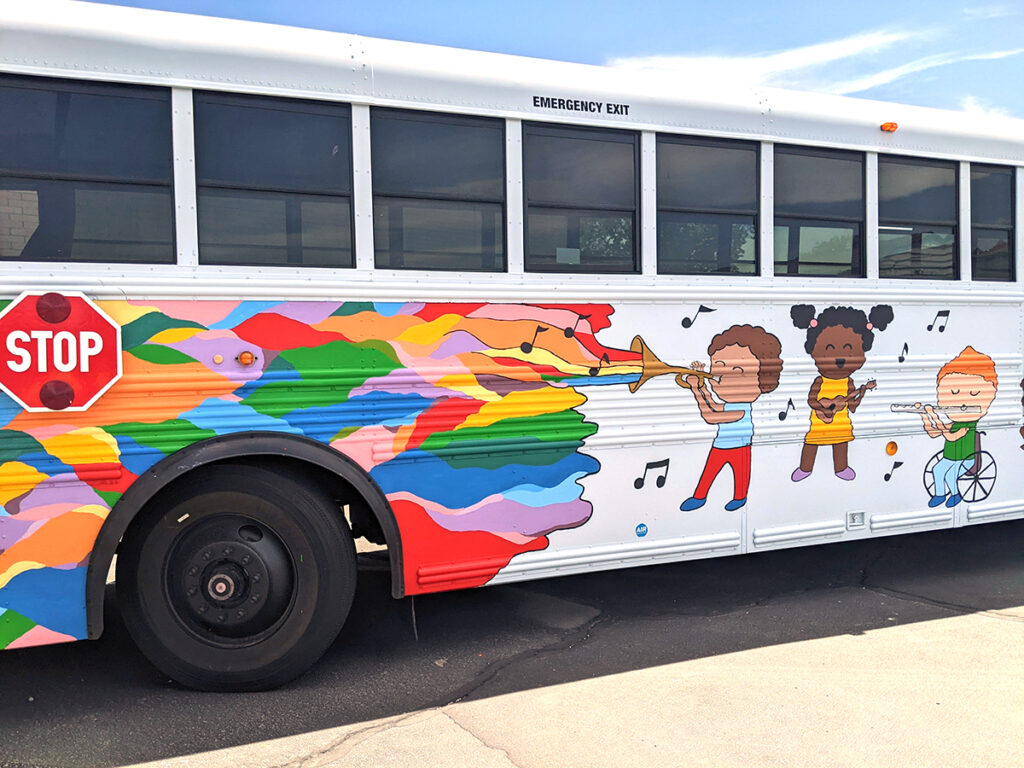
Painting a mural can be challenging, engaging, and sometimes a little bit stressful. Find art teachers who have successfully created murals and learn from them. Involve your school community of colleagues and student families. Have faith in yourself, believe in your students’ abilities, and have fun! Once you get the ball rolling, enjoy the time painting and building positive relationships with your students, and take great pride in the completed mural.
What would a good mural theme be for your students this year?
What are your top mural tips for other art teachers?
Magazine articles and podcasts are opinions of professional education contributors and do not necessarily represent the position of the Art of Education University (AOEU) or its academic offerings. Contributors use terms in the way they are most often talked about in the scope of their educational experiences.
